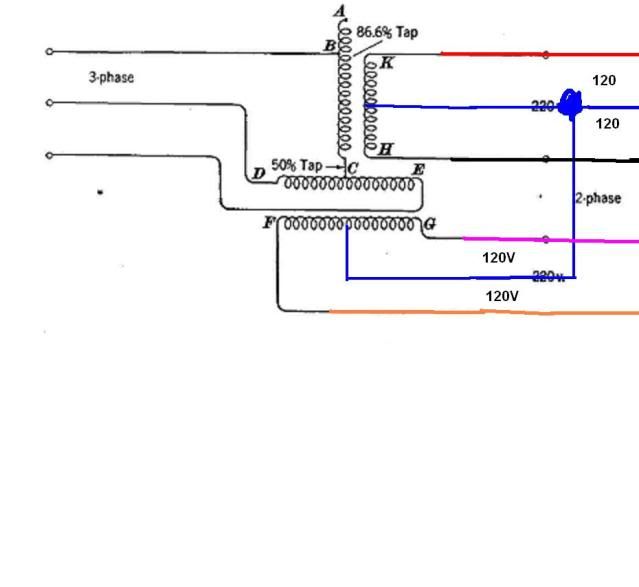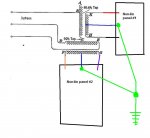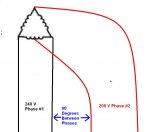Joethemechanic
Senior Member
- Location
- Hazleton Pa
- Occupation
- Electro-Mechanical Technician. Industrial machinery
Hi, my name is Joe and I am new here. I am from Philly and have been around for a few years. Philly at one time had a Two Phase generating and distribution system. I'm old enough to remember when it was common to work in two phase buildings. I've set up Scott connections, and I even know a few tricks with a delta secondary that I've used over the years to get emergency power to some of the two phase loads.
But anyway, I am very familiar with the "how" of the system, my question has more to do with the "why?"
What was the reasoning behind going with a two phase system in the first place? To me it just seems like a waste of copper. Most places went with three phase. Was there something different about the customer base and their types of loads here that made Philly decide against three and go in favor of two? Was it just that all the factors were not properly understood? Was it just that Philly was an early system, and they just copied what worked at Niagara Falls?
The only other thing that keeps popping into my head is, I think, years ago, an instructor told me that there was some concern with a harmonic on a three phase system that the engineers at the time believed would not occur if they went with the two phase.
I just can't remember. Maybe something to do with supplying single phase 25 cycle for rail traction? But they were M-G frequency converters and I can't see how it should matter.
Damn, where is that 130 year old engineer when you need him? lol
But anyway, I am very familiar with the "how" of the system, my question has more to do with the "why?"
What was the reasoning behind going with a two phase system in the first place? To me it just seems like a waste of copper. Most places went with three phase. Was there something different about the customer base and their types of loads here that made Philly decide against three and go in favor of two? Was it just that all the factors were not properly understood? Was it just that Philly was an early system, and they just copied what worked at Niagara Falls?
The only other thing that keeps popping into my head is, I think, years ago, an instructor told me that there was some concern with a harmonic on a three phase system that the engineers at the time believed would not occur if they went with the two phase.
I just can't remember. Maybe something to do with supplying single phase 25 cycle for rail traction? But they were M-G frequency converters and I can't see how it should matter.
Damn, where is that 130 year old engineer when you need him? lol




